
XV. International Architecture Exhibition in Venice 2016
Reporting from the Front
Curator
Last year, Chilean architect Alejandro Aravena was thrust into the center of attention in the global architectural community. After being entrusted with the Venice Architecture Biennale, he also received the Pritzker Prize at the beginning of the year, usually awarded to distinguished figures in the field. Such a position is not without paradoxes: he became a star of architecture at a time when the era of star architects is fading, along with their elitist approach to architecture. After the financial crisis of 2008, architecture is slowly changing, and Aravena's work symbolizes this transformation. His studio Elemental balances somewhere between two worlds: straddling large, often corporate buildings with refined details, and community and socially engaged projects that have made the not-yet-fifty-year-old Chilean (born in 1967) a "poster boy" for activist architecture. The most well-known project is the social housing project Villa Verde in the Chilean city of Constitución, which provided tenants affordable homes in the form of raw constructions that they could gradually complete according to their means. (The project is also known to viewers of the documentary Urbanized by Gary Hustwit, which presents his new film about office spaces at the very end of the Arsenale). For this year's fifteenth architecture exhibition as part of the Venice Biennale, he chose the title Reporting From The Front.
Reports from the Front
The battles being fought here take place on multiple fronts. The enemies are poverty, inequality, and environmental destruction. Conflicts, social segregation, and climate change are generating an ever-increasing number of homeless people, or those living in makeshift shelters. Every attentive reader of global press knows this, but it is also necessary to face adversaries within the profession itself. The global market for construction materials is pushing for mass consumption of non-renewable resources, accelerating climate change. Aravena has selected creators for his exhibition who are already combating this situation in adverse conditions and offering ways to specifically improve the world. The Chilean architect is also the first curator not from the "first world." This is reflected in his selection of exhibitors: more than ever, architects from Latin America, Asia, and Africa are present. 50 out of 88 participants are exhibiting in Venice for the first time, and 33 architects are under 40 years of age.
The previous biennale, prepared by Rem Koolhaas, provided more data, analyses, and critical thinking than its predecessor. This time, however, there is much more clay, wood, and bamboo on display. The basic tuning of the exhibition – low-cost, locally specific, and inventive – is already demonstrated in the entrance halls of both main exhibition spaces. Aravena created these from ninety tons of material leftover from the last biennale; the walls are stacked from broken drywall, and hundreds of bent metal strips hang from the ceiling. Small videos and labels unobtrusively introduce the main ideas of the exhibition, including their origins, sketches, and discarded concepts.
Inspiration from Scarcity
“A place of sufficiency: moderation,” was one of Aravena’s slogans for the exhibition. There seems to be enough of the polished surfaces, parametric nodes, and spectacular constructions that were so intoxicating to the first decade of our century. For the millions of people who lack access to electricity or clean water, however, none of that is particularly helpful. Architect Anna Heringer (see here) works in Bangladesh with local communities: she designs and teaches them to build with their own hands and from locally-sourced materials. For one of the halls, she created a rounded cocoon made of mud, where one can sit, touch the haptically very pleasant surface of the material, and inhale its slightly raw scent.
The main hall of the large pavilion in Giardini is dominated by an impressive arch structure made of ordinary bricks by Paraguayan architect Solano Benitez and his studio Gabinete de arquitectura. It illustrates how one can achieve generosity with limited resources, and it undoubtedly earned a main prize for this reason. Just as unavoidable in the Arsenale is an innovative vault constructed from pieces by Block Research Group from ETH Zurich. One of the few involved “matadors”—the studio of Norman Foster—also attempts to contribute with its prototype of a “drone port,” a simple shell that can serve as a port for drones, which have proven to be potentially very effective means for supplying remote areas in Africa in recent years.
Improvisation, Adaptation, Community
Necessity does not send all architects to areas affected by acute disasters. Even developed countries have their crises – increasingly tied to the global ones – which construction can worsen or alleviate. Key themes include community revitalization, the connection of building with place, and the use of local and sustainable materials.
The projects of Japanese Atelier Bow-Wow seem to have awaited this exhibition: their rural farm project with a butcher shop has its traditional capability of unleashing the world of small stories, including a beautiful model.
Vietnamese studio Vo Trong Nghia is known for its “tree house,” built around an already standing tree. At the exhibition, it mainly presents its bamboo meditation space. The community dimension is also found in the studio’s own work, whose principles – also presented – include time for collective meditation.
Even living classic Eduardo Souto de Moura did not hesitate to sacrifice his early work, a market in the Portuguese city of Braga, in favor of community service: as part of a new project, he allowed the building to be demolished after thirty years, constructing a new, smaller dance and arts center in its place; he only left the original columns as modern ruins.
Waste, Pollution, Recycling
An exceptionally interesting installation Let‘s Talk about Garbage by the Polish duo Hugon Kowalski and Marcin Szczelina, which thematizes often illegal movements of huge amounts of waste around the globe, would stand alone as a separate exhibition.
Amateur Architecture Studio by Chinese architects Wang Shu and Lu Wenyu is already famous for recycling tiles and bricks from demolished buildings on a monumental scale. At the exhibition, we can take a close look at their material collages.
The project for the reclamation of a giant landfill in Spain (Batlle i Roig) and its transformation into valuable landscape presents landscape architecture at the exhibition. Rather as a guest discipline, but we feel that more relevant themes could be found in this area. (Landscape architecture, however, has its own biennale in Barcelona this year).
Society, Politics, Capital
“If architecture is the most political art, then this biennale must acknowledge it,” said Biennale president Paolo Baratta at the beginning.
The NGO Forensic Architecture, led by Israeli architect Eyal Weizman, gathers evidence of bombings in the Middle East for the International Criminal Court and the UN. “War today almost exclusively occurs in cities,” says Weizman, “so architects are able to illuminate how events precisely occurred.” They use photographs from social networks and digital maps, creating 3D reconstructions that provide insight directly into the conflict. In the middle of the hall, a room from a house in Pakistan that was targeted by a drone attack is reconstructed at a 1:1 scale, just at the moment the bomb penetrated the ceiling.
The presentation by the Ecuadorian team Al Borde also compares the expense of constructions. The differences in the price of various buildings are poignantly illustrated here by a minimalist speech of bags of money placed in squares on the floor. The subtext is a critique of the construction industry and the speculative real estate market.
Beauty Despite
“In our struggles, we must not forget beauty,” Aravena remarked, and this year’s biennale features halls where sensory experience prevails. It must be acknowledged that in the context of the exhibition, which involves much reading and critical thinking, these spaces may act as a sort of respite for many visitors, especially since they resemble more of what they expect from an architecture exhibition. The installation by Chilean studio Pezo von Ellrichshausen outside the pavilion in Giardini, based on intersecting circles, offers a space for contemplation about all the stimuli on display. Aires Mateus presents impressively lit cuts of architectural space in a dark room. Some installations, however, feel somewhat out of place in this context. It is perhaps no coincidence that these are often museum projects. An extremely impressive installation of so-called crepuscular rays, Lightscape (Transsolar + Anja Thierfelder), which descends upon visitors in the middle of the arsenale corridor, was developed for the Louvre branch in Abu Dhabi. Peter Zumthor plays out his sensory hedonism here on a color spectrum of textiles that are part of the collections of the Los Angeles County Museum of Art (LACMA), currently in progress. And Tadao Ando presents, at this “biennale for the poor,” for some unknown reason, his recently completed project for billionaire Francois Pinault's collection at the Venice Punta della Dogana.
Partial Failures
Aravena had ten months to prepare the entire exhibition, significantly less than the two years that Rem Koolhaas required for the last biennale. It cannot be said that this is not noticeable. The exhibition, full of undoubtedly current and meaningful projects, does not always function well as an exhibition, as a visual experience in itself. An example is the labels, which are difficult to read due to poor lighting and small font, and if you manage to read them, they offer rather awkwardly written texts. A classic vice of many exhibitors is the attempt to display too much; here, however, the curator should be the brake. It cannot be said that Aravena is always sufficiently uncompromising in this regard.
This year’s biennale, despite these faults, brings a positive message: architects are leaving the bubble that has long dominated architecture, becoming interested in the real problems of the world around them, and trying to offer responses – even though they know they cannot solve everything. The biennale surely resonates with the spirit of the times, and yes, it is politically correct. The only way it could offend is the attempt not to offend anyone (as noted by a critic from the LA Times). It is true that the voices of those for whom the help is intended are not very heard at the exhibition. The theme may lend itself to kitsch, but the suspicion that noble goals are merely a moral shield for architects' whims is unfulfilled. The overall impression is more tolerant and curious than doctrinaire and moralistic. Nonetheless, there have been voices, most notably that of Patrik Schumacher, who would most prefer to close the entire exhibition. He speaks of the idea that the poor and powerless should be helped by politicians or NGOs, and architects should stick to, in short, “their own,” which we should understand as formally innovative creations for wealthy clients. However, the background reveals more of a fear that times are changing. The influence of the existing architectural elite, for whom Venice has been a showcase for the past two decades, is waning.
A more serious critical question, however, is whether architecture – which is mostly directly dependent on power and money – can be completely sincere in its critique of the current state of the world. Some entrenched concepts remain static: as noted by Mimi Zeiger, the traditional modernist belief in the redeeming power of honest materials, spatial logic, and technology remains essentially unshaken here.
This year’s biennale is definitely worth seeing – and also because of the questions it raises. At least here, architecture does not seem as decadent as many might think, and it shows that it has something to offer.
More information >
Last year, Chilean architect Alejandro Aravena was thrust into the center of attention in the global architectural community. After being entrusted with the Venice Architecture Biennale, he also received the Pritzker Prize at the beginning of the year, usually awarded to distinguished figures in the field. Such a position is not without paradoxes: he became a star of architecture at a time when the era of star architects is fading, along with their elitist approach to architecture. After the financial crisis of 2008, architecture is slowly changing, and Aravena's work symbolizes this transformation. His studio Elemental balances somewhere between two worlds: straddling large, often corporate buildings with refined details, and community and socially engaged projects that have made the not-yet-fifty-year-old Chilean (born in 1967) a "poster boy" for activist architecture. The most well-known project is the social housing project Villa Verde in the Chilean city of Constitución, which provided tenants affordable homes in the form of raw constructions that they could gradually complete according to their means. (The project is also known to viewers of the documentary Urbanized by Gary Hustwit, which presents his new film about office spaces at the very end of the Arsenale). For this year's fifteenth architecture exhibition as part of the Venice Biennale, he chose the title Reporting From The Front.
Reports from the Front
The battles being fought here take place on multiple fronts. The enemies are poverty, inequality, and environmental destruction. Conflicts, social segregation, and climate change are generating an ever-increasing number of homeless people, or those living in makeshift shelters. Every attentive reader of global press knows this, but it is also necessary to face adversaries within the profession itself. The global market for construction materials is pushing for mass consumption of non-renewable resources, accelerating climate change. Aravena has selected creators for his exhibition who are already combating this situation in adverse conditions and offering ways to specifically improve the world. The Chilean architect is also the first curator not from the "first world." This is reflected in his selection of exhibitors: more than ever, architects from Latin America, Asia, and Africa are present. 50 out of 88 participants are exhibiting in Venice for the first time, and 33 architects are under 40 years of age.
The previous biennale, prepared by Rem Koolhaas, provided more data, analyses, and critical thinking than its predecessor. This time, however, there is much more clay, wood, and bamboo on display. The basic tuning of the exhibition – low-cost, locally specific, and inventive – is already demonstrated in the entrance halls of both main exhibition spaces. Aravena created these from ninety tons of material leftover from the last biennale; the walls are stacked from broken drywall, and hundreds of bent metal strips hang from the ceiling. Small videos and labels unobtrusively introduce the main ideas of the exhibition, including their origins, sketches, and discarded concepts.
Inspiration from Scarcity
“A place of sufficiency: moderation,” was one of Aravena’s slogans for the exhibition. There seems to be enough of the polished surfaces, parametric nodes, and spectacular constructions that were so intoxicating to the first decade of our century. For the millions of people who lack access to electricity or clean water, however, none of that is particularly helpful. Architect Anna Heringer (see here) works in Bangladesh with local communities: she designs and teaches them to build with their own hands and from locally-sourced materials. For one of the halls, she created a rounded cocoon made of mud, where one can sit, touch the haptically very pleasant surface of the material, and inhale its slightly raw scent.
The main hall of the large pavilion in Giardini is dominated by an impressive arch structure made of ordinary bricks by Paraguayan architect Solano Benitez and his studio Gabinete de arquitectura. It illustrates how one can achieve generosity with limited resources, and it undoubtedly earned a main prize for this reason. Just as unavoidable in the Arsenale is an innovative vault constructed from pieces by Block Research Group from ETH Zurich. One of the few involved “matadors”—the studio of Norman Foster—also attempts to contribute with its prototype of a “drone port,” a simple shell that can serve as a port for drones, which have proven to be potentially very effective means for supplying remote areas in Africa in recent years.
Improvisation, Adaptation, Community
Necessity does not send all architects to areas affected by acute disasters. Even developed countries have their crises – increasingly tied to the global ones – which construction can worsen or alleviate. Key themes include community revitalization, the connection of building with place, and the use of local and sustainable materials.
The projects of Japanese Atelier Bow-Wow seem to have awaited this exhibition: their rural farm project with a butcher shop has its traditional capability of unleashing the world of small stories, including a beautiful model.
Vietnamese studio Vo Trong Nghia is known for its “tree house,” built around an already standing tree. At the exhibition, it mainly presents its bamboo meditation space. The community dimension is also found in the studio’s own work, whose principles – also presented – include time for collective meditation.
Even living classic Eduardo Souto de Moura did not hesitate to sacrifice his early work, a market in the Portuguese city of Braga, in favor of community service: as part of a new project, he allowed the building to be demolished after thirty years, constructing a new, smaller dance and arts center in its place; he only left the original columns as modern ruins.
Waste, Pollution, Recycling
An exceptionally interesting installation Let‘s Talk about Garbage by the Polish duo Hugon Kowalski and Marcin Szczelina, which thematizes often illegal movements of huge amounts of waste around the globe, would stand alone as a separate exhibition.
Amateur Architecture Studio by Chinese architects Wang Shu and Lu Wenyu is already famous for recycling tiles and bricks from demolished buildings on a monumental scale. At the exhibition, we can take a close look at their material collages.
The project for the reclamation of a giant landfill in Spain (Batlle i Roig) and its transformation into valuable landscape presents landscape architecture at the exhibition. Rather as a guest discipline, but we feel that more relevant themes could be found in this area. (Landscape architecture, however, has its own biennale in Barcelona this year).
Society, Politics, Capital
“If architecture is the most political art, then this biennale must acknowledge it,” said Biennale president Paolo Baratta at the beginning.
The NGO Forensic Architecture, led by Israeli architect Eyal Weizman, gathers evidence of bombings in the Middle East for the International Criminal Court and the UN. “War today almost exclusively occurs in cities,” says Weizman, “so architects are able to illuminate how events precisely occurred.” They use photographs from social networks and digital maps, creating 3D reconstructions that provide insight directly into the conflict. In the middle of the hall, a room from a house in Pakistan that was targeted by a drone attack is reconstructed at a 1:1 scale, just at the moment the bomb penetrated the ceiling.
The presentation by the Ecuadorian team Al Borde also compares the expense of constructions. The differences in the price of various buildings are poignantly illustrated here by a minimalist speech of bags of money placed in squares on the floor. The subtext is a critique of the construction industry and the speculative real estate market.
Beauty Despite
“In our struggles, we must not forget beauty,” Aravena remarked, and this year’s biennale features halls where sensory experience prevails. It must be acknowledged that in the context of the exhibition, which involves much reading and critical thinking, these spaces may act as a sort of respite for many visitors, especially since they resemble more of what they expect from an architecture exhibition. The installation by Chilean studio Pezo von Ellrichshausen outside the pavilion in Giardini, based on intersecting circles, offers a space for contemplation about all the stimuli on display. Aires Mateus presents impressively lit cuts of architectural space in a dark room. Some installations, however, feel somewhat out of place in this context. It is perhaps no coincidence that these are often museum projects. An extremely impressive installation of so-called crepuscular rays, Lightscape (Transsolar + Anja Thierfelder), which descends upon visitors in the middle of the arsenale corridor, was developed for the Louvre branch in Abu Dhabi. Peter Zumthor plays out his sensory hedonism here on a color spectrum of textiles that are part of the collections of the Los Angeles County Museum of Art (LACMA), currently in progress. And Tadao Ando presents, at this “biennale for the poor,” for some unknown reason, his recently completed project for billionaire Francois Pinault's collection at the Venice Punta della Dogana.
Partial Failures
Aravena had ten months to prepare the entire exhibition, significantly less than the two years that Rem Koolhaas required for the last biennale. It cannot be said that this is not noticeable. The exhibition, full of undoubtedly current and meaningful projects, does not always function well as an exhibition, as a visual experience in itself. An example is the labels, which are difficult to read due to poor lighting and small font, and if you manage to read them, they offer rather awkwardly written texts. A classic vice of many exhibitors is the attempt to display too much; here, however, the curator should be the brake. It cannot be said that Aravena is always sufficiently uncompromising in this regard.
This year’s biennale, despite these faults, brings a positive message: architects are leaving the bubble that has long dominated architecture, becoming interested in the real problems of the world around them, and trying to offer responses – even though they know they cannot solve everything. The biennale surely resonates with the spirit of the times, and yes, it is politically correct. The only way it could offend is the attempt not to offend anyone (as noted by a critic from the LA Times). It is true that the voices of those for whom the help is intended are not very heard at the exhibition. The theme may lend itself to kitsch, but the suspicion that noble goals are merely a moral shield for architects' whims is unfulfilled. The overall impression is more tolerant and curious than doctrinaire and moralistic. Nonetheless, there have been voices, most notably that of Patrik Schumacher, who would most prefer to close the entire exhibition. He speaks of the idea that the poor and powerless should be helped by politicians or NGOs, and architects should stick to, in short, “their own,” which we should understand as formally innovative creations for wealthy clients. However, the background reveals more of a fear that times are changing. The influence of the existing architectural elite, for whom Venice has been a showcase for the past two decades, is waning.
A more serious critical question, however, is whether architecture – which is mostly directly dependent on power and money – can be completely sincere in its critique of the current state of the world. Some entrenched concepts remain static: as noted by Mimi Zeiger, the traditional modernist belief in the redeeming power of honest materials, spatial logic, and technology remains essentially unshaken here.
This year’s biennale is definitely worth seeing – and also because of the questions it raises. At least here, architecture does not seem as decadent as many might think, and it shows that it has something to offer.
More information >
The English translation is powered by AI tool. Switch to Czech to view the original text source.

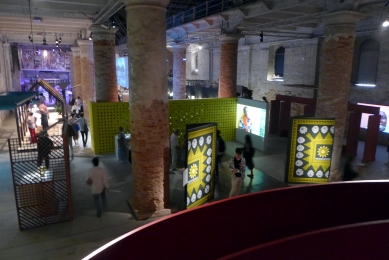
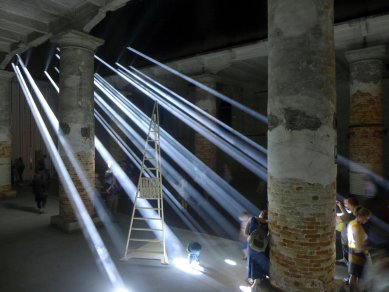

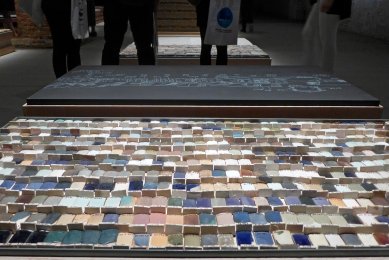

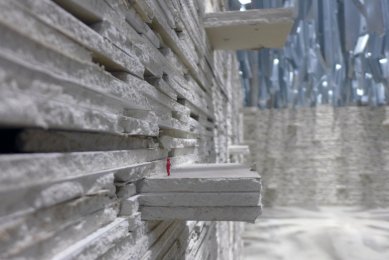


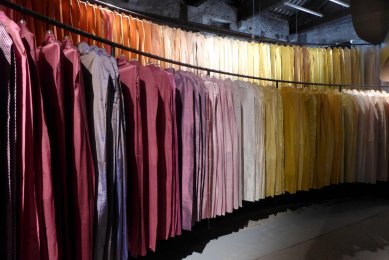

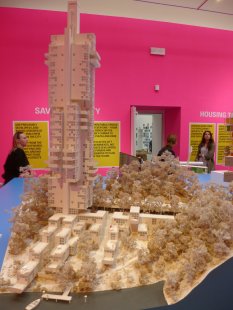
1 comment
add comment
Subject
Author
Date
Svítá?
Tomáš Vích
20.06.16 09:45
show all comments
Related articles
0
24.02.2018 | Forensic Architecture: The Architecture of Conflict
0
13.08.2016 | Carnival never ends - XV. Biennale in Venice
0
26.06.2016 | XV. International Architecture Exhibition in Venice - National Pavilions
0
10.05.2016 | The Golden Lion at the 15th Venice Architecture Biennale was awarded to Mendes da Rocha
0
29.01.2016 | Winning project of the 15th Venice Biennale of Architecture 2016
0
19.07.2015 | The curator of the 15th architecture biennale in Venice is Alejandro Aravena











